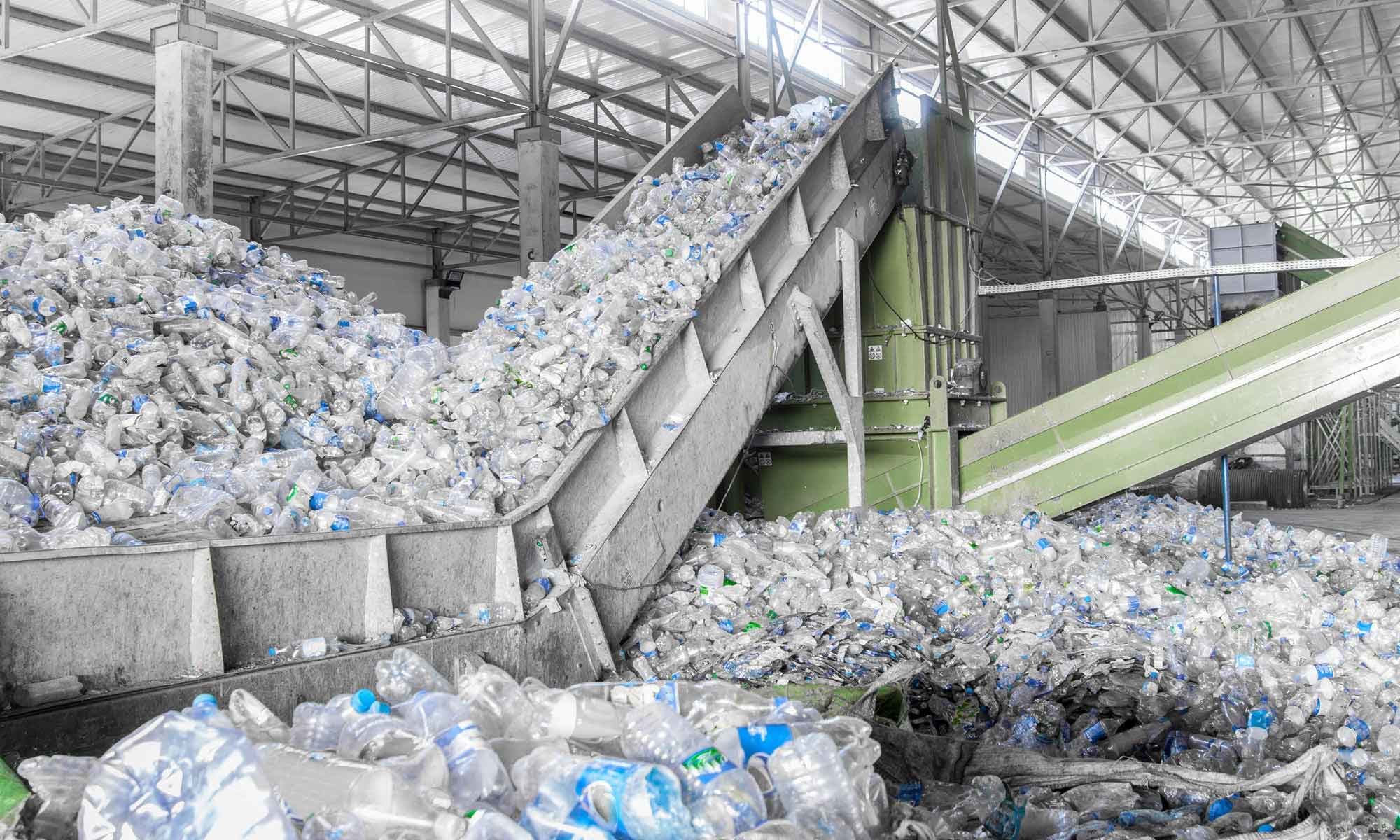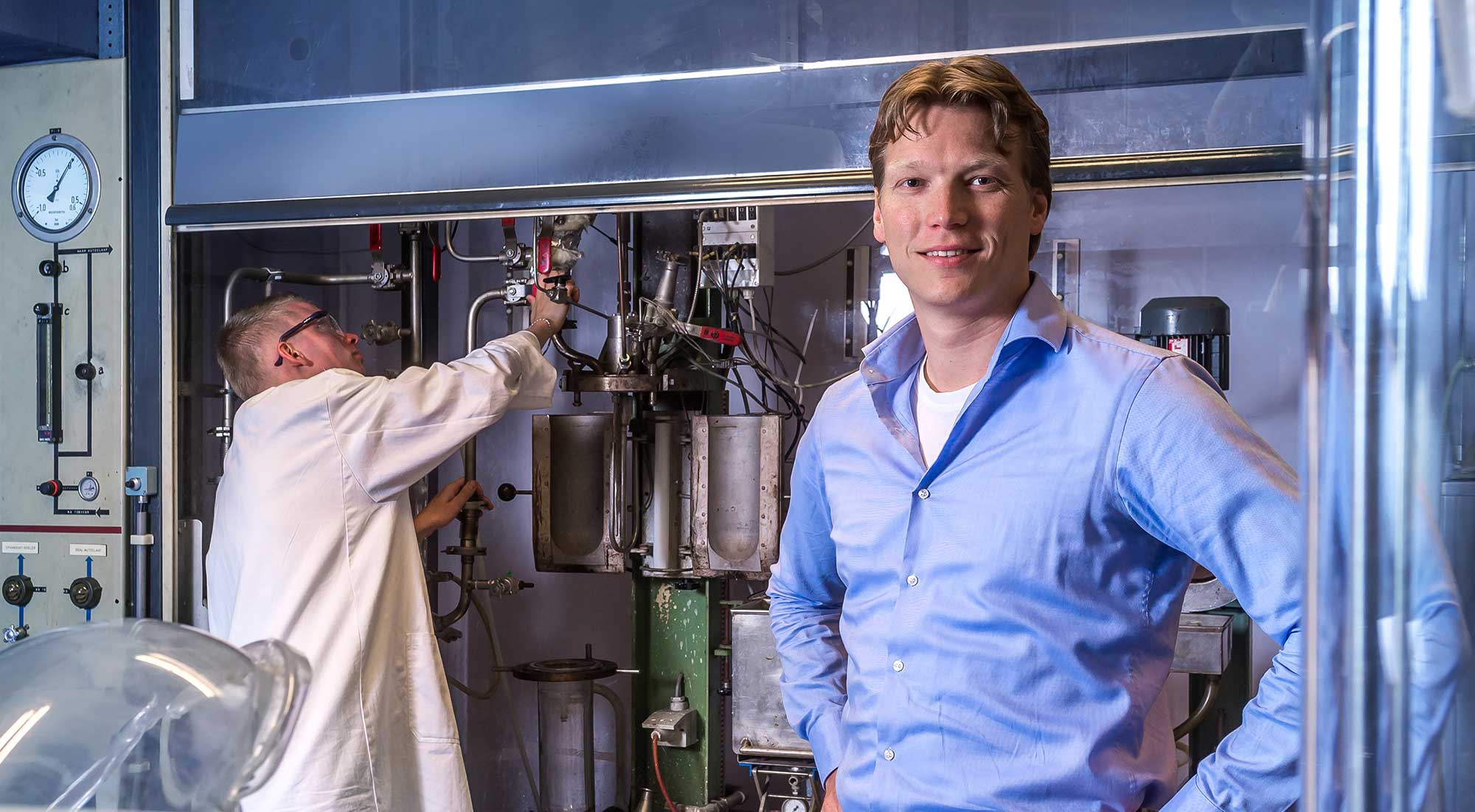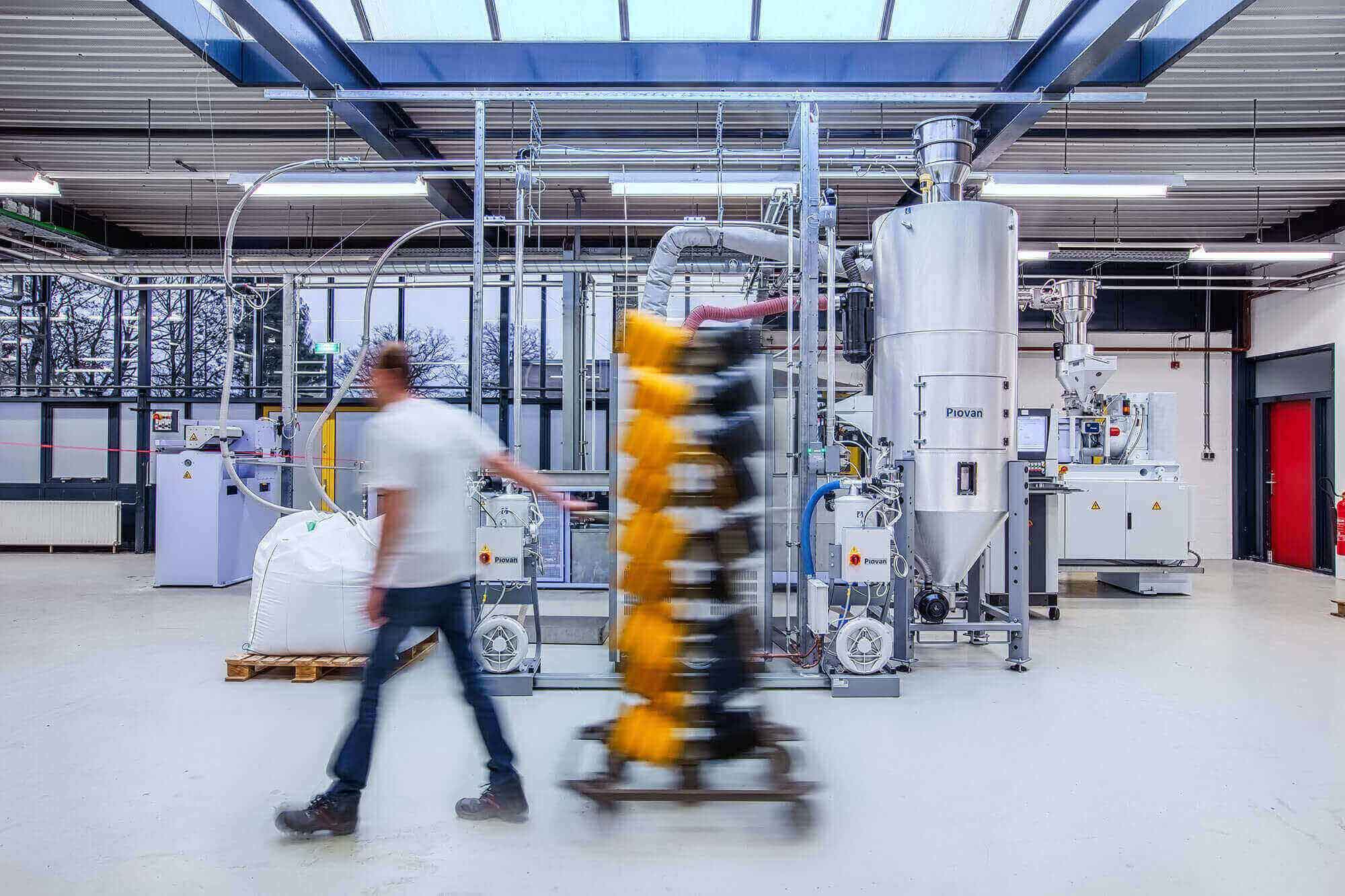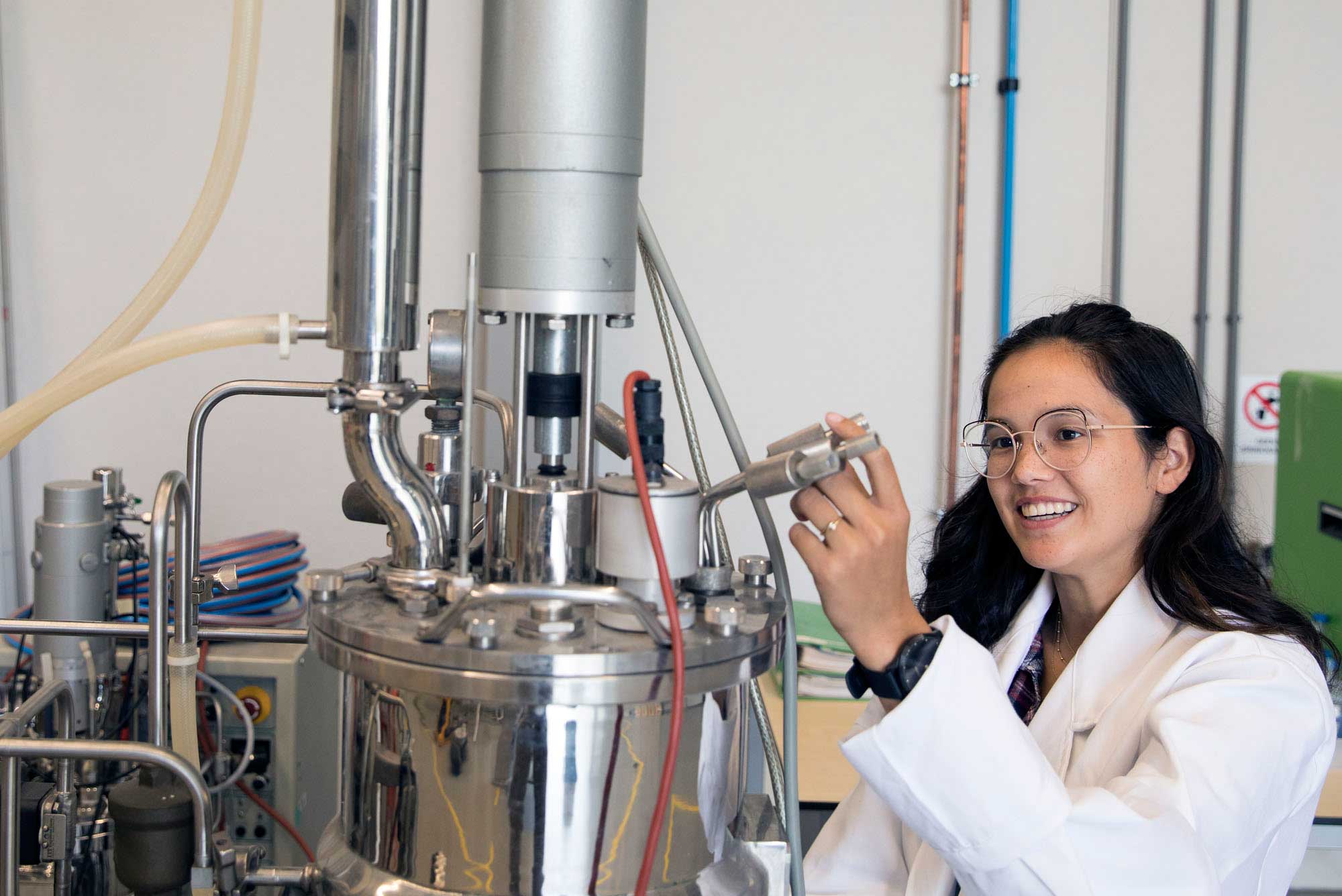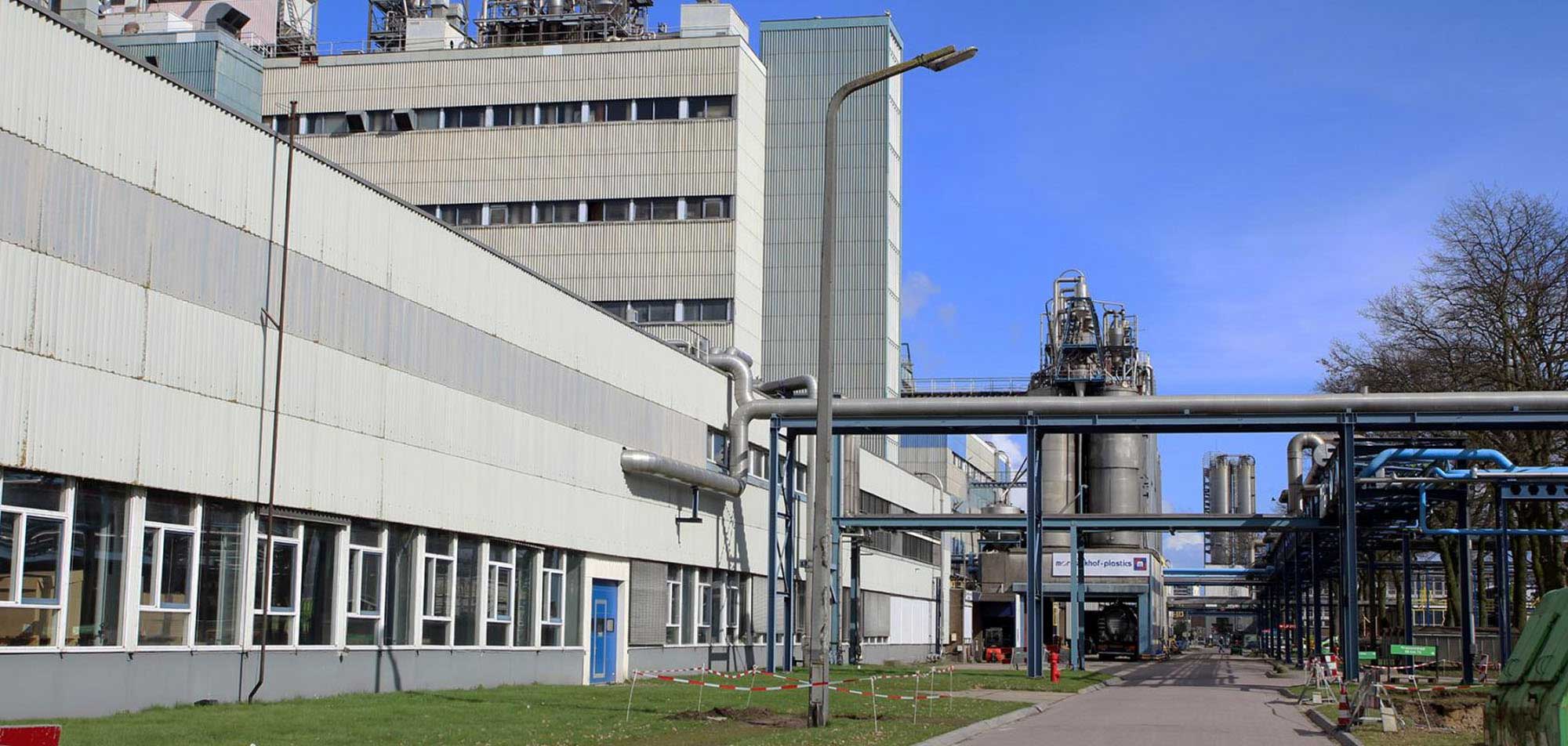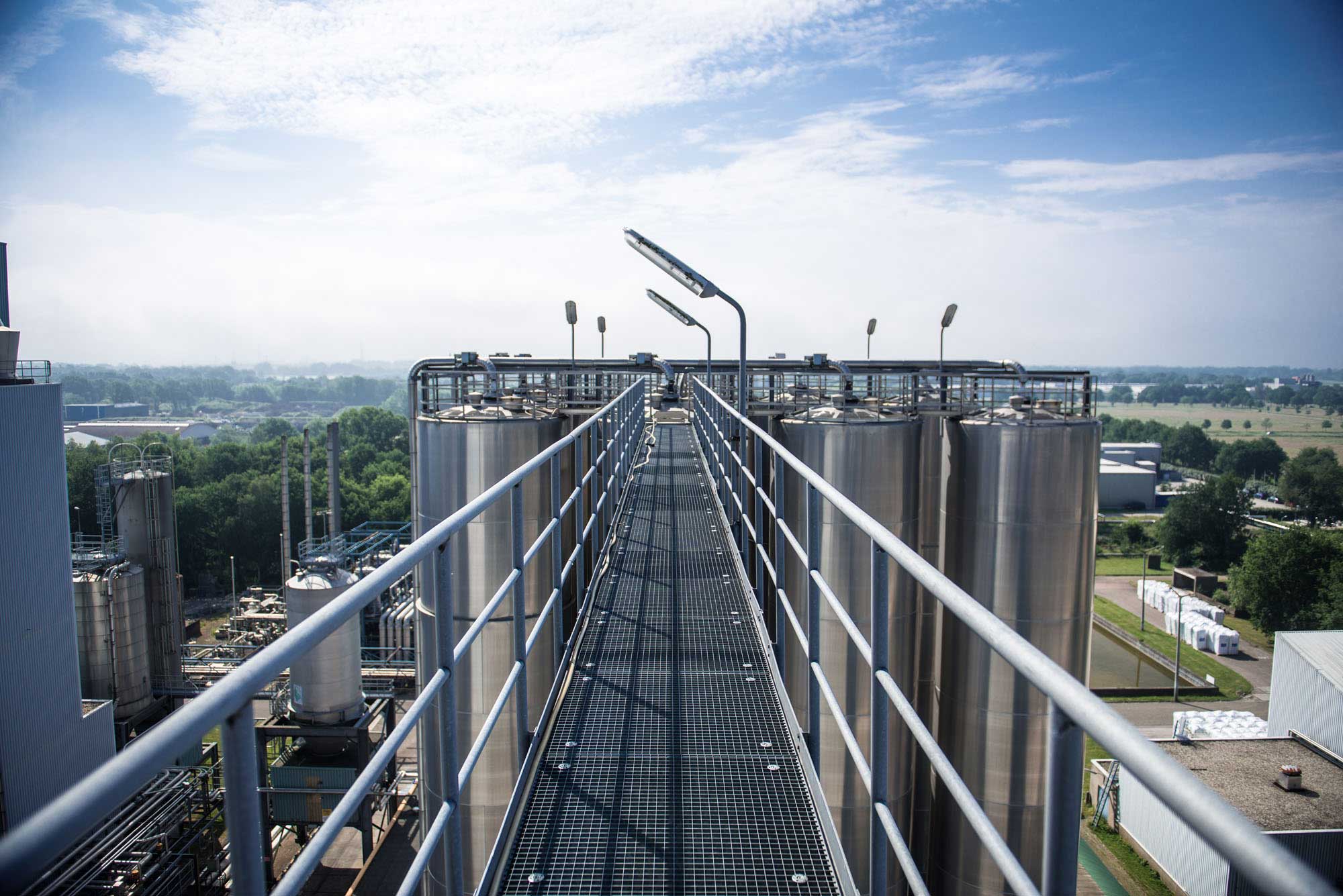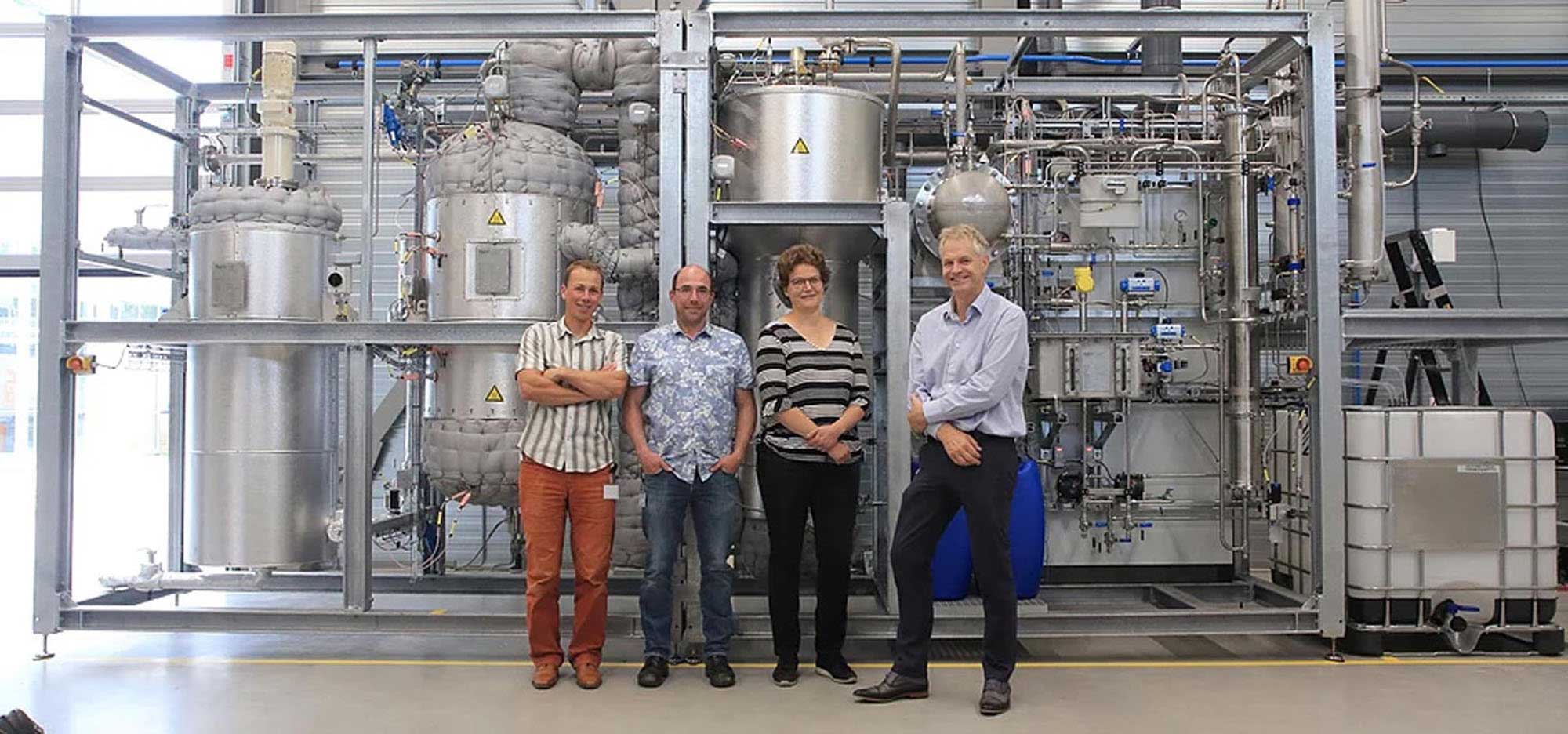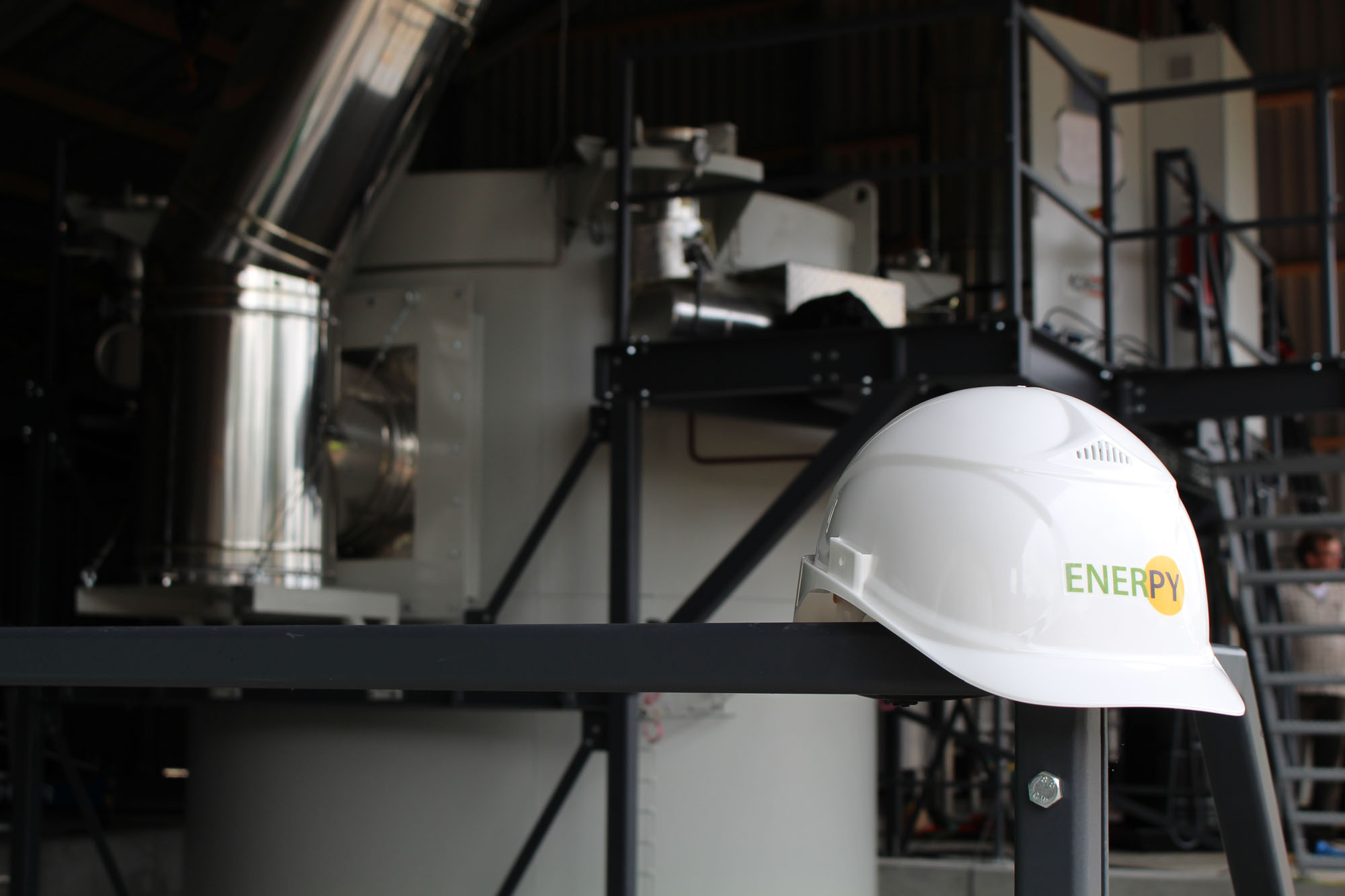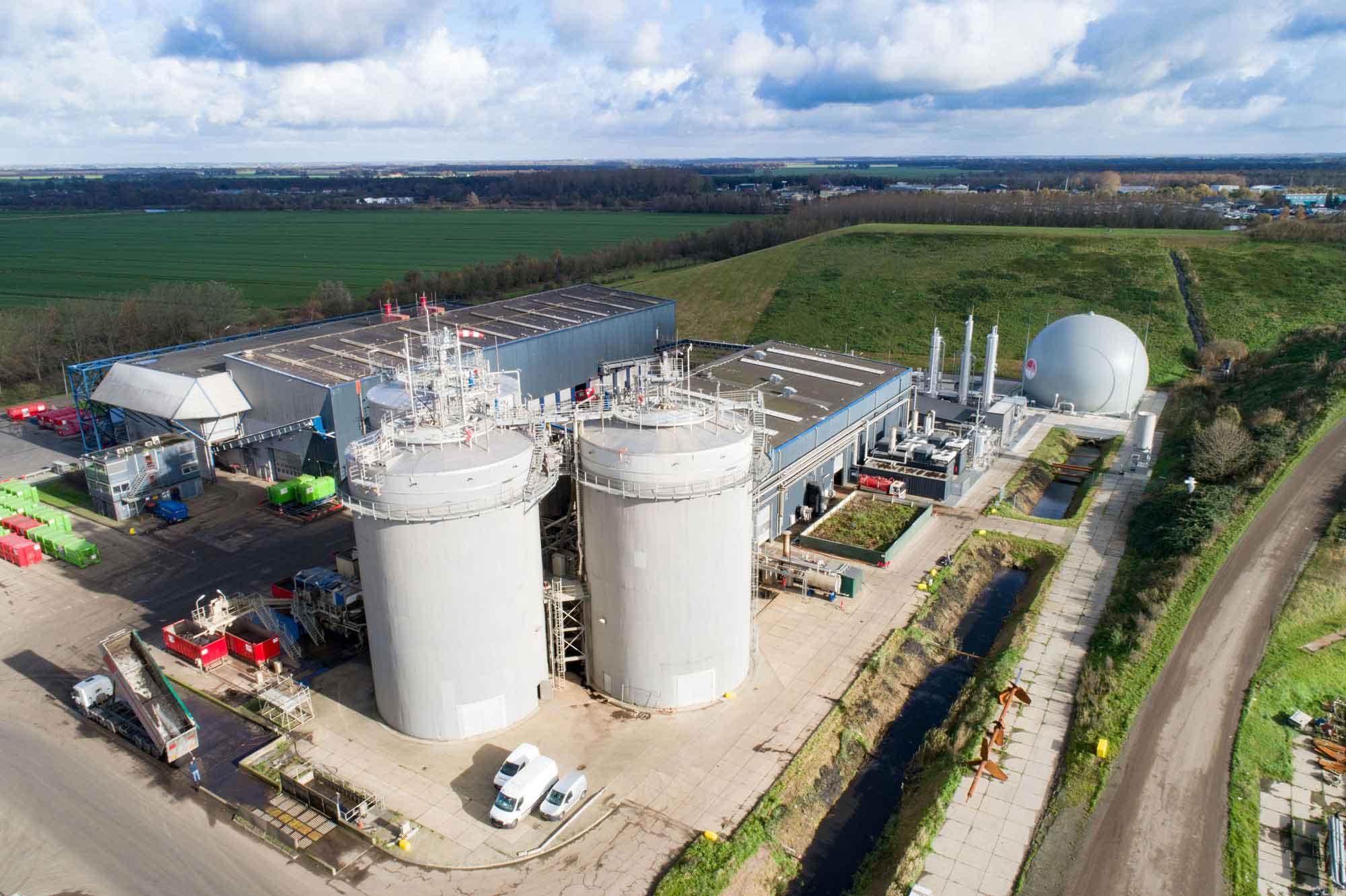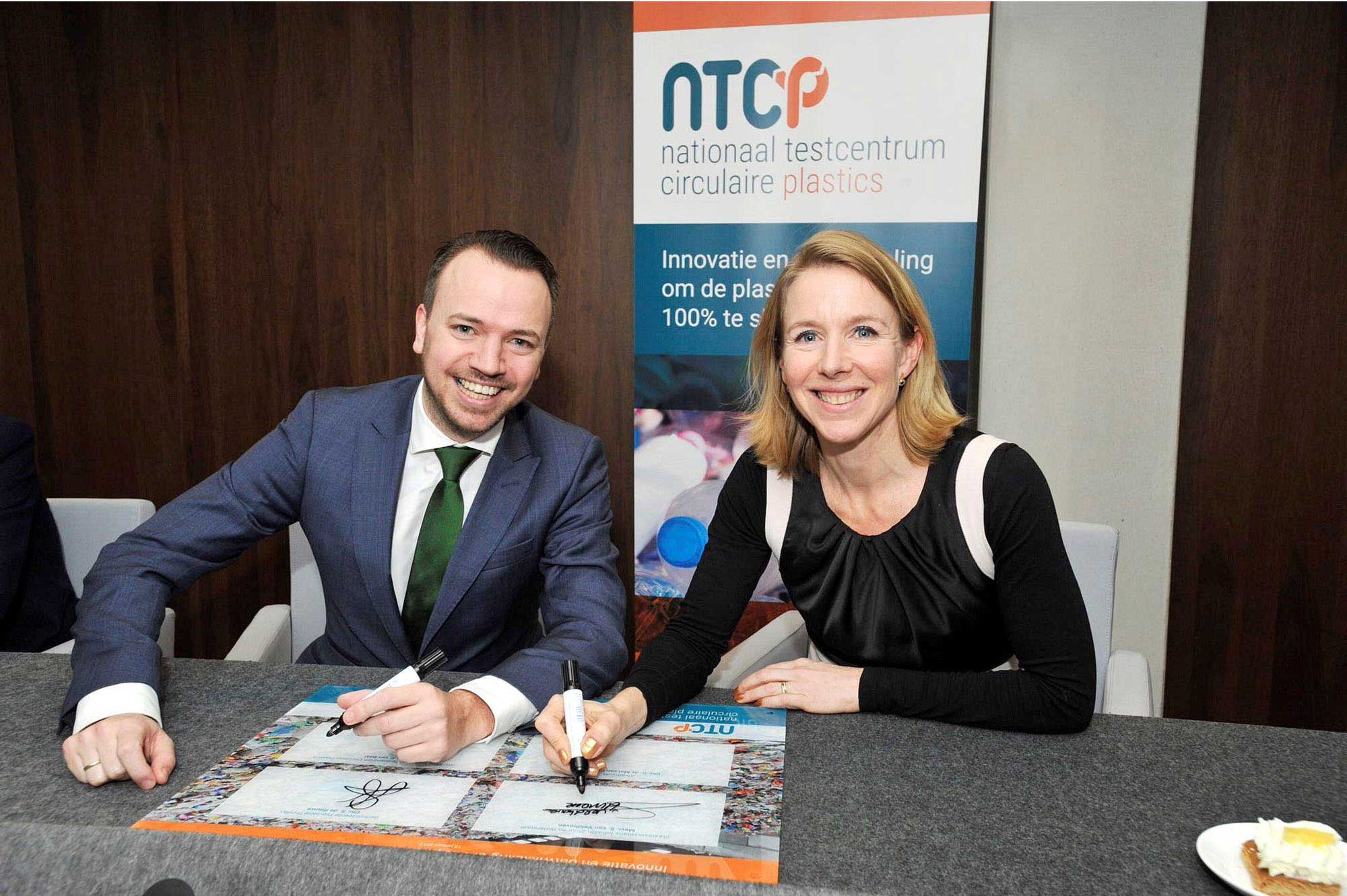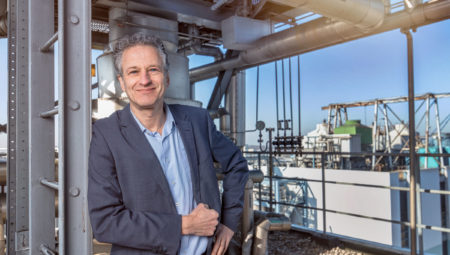Since the discovery of the plastic soup some 30 years ago, the way of thinking about the manufacture, application, degradability and recycling of plastics has been changing. The northern Netherlands is playing a leading role in this domain. This is where major plastics-related innovations have originated since the sixties, in part due to the foundation of the very first Dutch Polymer Chemistry research group over fifty years ago at the University of Groningen.
Climate issues, declining oil reserves and concerns about environmental pollution caused by plastic waste nowadays are resulting in a renewed interest in green plastics. To genuinely manufacture green plastics requires biopolymers. Some, such as PLA already exist on the market, others are still in development.
Degradable plastics
PLA (polylactic acid) based plastics are increasingly more often used for consumer products. These biobased plastics are biodegradable, but only under industrial conditions. Companies, such as Senbis use PLA for rope, while InnoFil3D manufactures PLA-based filaments for 3D printers.
PHA (polyhydroxyalkanoate) is used to manufacture plastics that are entirely biodegradable, even in a compost pile in the garden and in water, at low temperatures. However, the development of these plastics is lagging the development of PLAs by about fifteen years. In 2018, the share of bioplastic materials in the total plastics market was only 1.4%, but the European Bioplastics sector organisation expects the use of bioplastics to increase at least five-fold over the next five years. Remaining challenges include standardisation, the reproducibility of production processes, managing material properties and industrial processability using existing equipment.
The Chemical Cluster Emmen (part of Chemport Europe), along with parties in Germany and Sweden, is currently conducting international research into the latter. A large group of knowledge institutes and companies in the northern Netherlands currently is also conducting multidisciplinary research into the creation of a comprehensive PHA value chain. This is happening under the banner BERNN (Biobased Economy Region Northern Netherlands), a partnership in the field of biobased materials of the northern Netherlands universities of applied sciences NHL Stenden, Hanze and Van Hall Larenstein, and the University of Groningen (RUG).
Recycling
While the future of sustainable plastics is in biobased polymers, innovative plastics recycling practices primarily are a technology of the present.
The technology for converting old plastics into new products using mechanical recycling is already well-developed, while chemical recycling is developing rapidly. The next step is adding biobased components to this process. Plastics ultimately must be fully biobased or circular.
There is broad knowledge and experience with recycling plastics, ranging from depolymerisation to design to logistics and handling, in the northern Netherlands. The region has everything in-house needed to recycle all possible kinds of plastics mechanically, chemically or thermochemically.
Mechanical recycling
The mechanical recycling of plastics is considered a sustainable first choice because it retains the energy that was at one time put into the plastic. During mechanical recycling the plastics are sorted, cleaned, shredded and ground into flakes, which can in turn be used to produce granulate for producing new plastics.
This may sound simpler than it is. This is because mechanical recycling requires relatively clean input flows, such as PET bottles that are collected via a closed returnable deposit system. Household flows must first be separated and contain a range of plastic types, sometimes in combination with multi-layered foils, as well as organic and inorganic contaminants.
The development of recycled plastics for the food industry in particular is subject to high demands. Regulations in that area are very strict. First, the plastics to be recycled may contain auxiliary materials that were permitted in the past, but are no longer permitted today. Second, what has happened to the plastic between use and the waste stage is unknown.
Chemical recycling
Chemical recycling, whereby polymers are broken down into monomers, is a solution to both problems. In Emmen the companies Cumapol and Morssinkhof have developed the CuRe technology, a method of chemical recycling that converts coloured polyester into new polymers. In this process, contaminants and undesirable pigments are separated from the depolymerised plastics thus creating virgin building blocks. For example, this way polyester carpets can be used to produce new polyester fibres (recycled PET or rPET).
These type of rPET yarns are currently being produced in Emmen by the polyester company Cumapol together with the recycling company Morssinkhof. They are able to produce different types of yarn for different products, ranging from carpet fibres to ropes and tensioning belts (also see Mark Ruesink’s blog elsewhere in this magazine).
Household waste
Recovering plastic from household waste is a more complicated affair. Omrin, a waste collection company in the Province of Friesland, together with HVC and Midwaste in Heerenveen, has built a plastic sorting line that enables them to separate various types of plastic from household waste. Morssinkhof is still adding a recycling line specifically designed to recycle high-density polyethylene (HDPE) and polypropylene (PP). In Wijster, in the Province of Drenthe, Attero is also sorting and recycling different plastics from consumer waste.
Another raw material that has not yet been tapped for recycling is textiles. Companies that produce sport shirts are interested in this, for example. This way old polyester shirts can be transformed into new ones.
Thermo-chemical recycling
Mechanical and chemical recycling both require a relatively clean stream of used plastics. Mixed plastics generally are incinerated as waste, which produces electricity as a by-product. But thermo-chemical recycling is an option as well. In this process, mixed plastics are heated in the presence of a catalyst that breaks down the polymers into their basic aromatic building blocks: benzene, toluene and xylene (BTX). These building blocks form the basis for new, virgin PET.
BioBTX in Groningen has developed a conversion process to produce these aromatics from glycerine. The company recently opened a pilot plant for this purpose in the Zernike Advanced Processing Facility (ZAP). The next step is to make use of solid plastic waste as a raw material in this process (also see Rob van Linschoten’s blog elsewhere in this magazine).
Other companies, mostly domiciled in Delfzijl, convert polymers into still simpler basic building blocks. Enerpy produces oil, gas and carbon from organic materials and plastics with the aid of microwave-based pyrolysis. Syngas is released during this process; a mixture of hydrogen, carbon monoxide and carbon dioxide. An advantage of these methods is that they are capable of recycling laminated products that consist of a combination of plastic film and paper.
National Test Centre for Circular Plastics
However, much of this recycled plastic from mixed flows is not suitable for high-quality applications. To improve the recyclability of packaging and consumer products, the packaging industry, the Ministry of Infrastructure and Water Management and other partners have invested in a National Test Centre for Circular Plastics in Heerenveen. Companies here can have their products tested for recyclability in batches of 100 kg.
Within this ecosystem it is possible to recycle tens of kilotonnes of plastic per year. The northern provinces each year produce approximately 90 kilotonnes of plastic waste. Recycled plastics from Heerenveen and Emmen are directly shipped to producers, such as Philips in Drachten, although more frequently to Delfzijl for chemical recycling to produce basic chemical building blocks, or to Emmen where monomers are produced that subsequently are used for regular polymer production processes.
The Chemport Europe ecosystem offers all of these possibilities, concentrated in a handful of locations spread across just a few square kilometres.
This article was created in cooperation with Chemport Europe.
